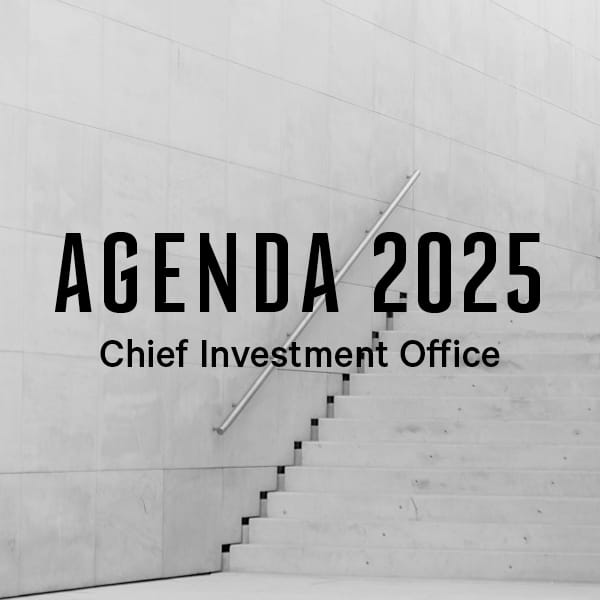-
Time for small to shine?

One of the interesting features of the equity market in October is the relative outperformance of small companies over their larger counterparts.
If we are correct in our view that the trough for this economic cycle is in, then the outperformance we have seen this month is just the beginning. There is a strong historical precedent, looking back over the past 90 years and 14 recessions, for small companies to outperform large at this point in the cycle. The outperformance is longer and larger following major market meltdowns such as what we experienced earlier this year.
-
Is the trough in for this cycle?

The economic data released over recent weeks and months suggests the economy has bounced back considerably from the low recorded for April. This can be seen in Chart 1 below where we show what the data are telling us for consumption, production and employment.
It is estimated that consumer spending surged by almost 40% in the third quarter amid the economy reopening and the triple-digit rise in auto sales. Strong demand, low interest rates and depleted stock has also supported housing activity. Home builder sentiment has increased to its highest level since records began in 1985.
The rebound in industrial production has not been as extreme as it has been for consumption, but lean inventories will promote stable factory-output going forward.
Business fixed investment has also recovered sharply, again to a smaller degree than consumption. It is estimated business investment rebounded by 17% in the third quarter following a 27% drop in the second quarter.
The recovery is continuing in the labour market, albeit at a slower pace as uncertainty rises in line with a rise in new COVID-19 cases.
Also shown in Chart 1 is the Conference Board Leading Economic Indicator (d). This indicator, published by the Conference Board, a non-government organisation, is an aggregation of 10 separate indicators that when brought together provide a reading on where economic growth is headed to next. The brown bars are the months when the US was in recession.
This indicator shows a bottom was hit in April this year. Since that time the leading indicator has been improving. If history is any guide, this suggests that the trough is in for this recession.
Chart 1: US economic data suggests the trough in the cycle is in

Source: Bloomberg, as at 22/10/20
The earnings season is also providing encouraging signals that companies have turned the corner. Not only have most beaten analyst forecasts, they’re more optimistic about the future.
This month, 52 companies, including Verizon and Procter and Gamble, have raised their financial outlooks and only six have cut them. The net improvement as a percentage of the total reached 63%, the highest since Bloomberg started compiling the data in 2000.
-
History tells the story

Empirical research dating back to 1933 shows that US small cap stock indices tend to outperform large cap stock indices in the 12 months following the trough in the US economic cycle (Chart 2).
This has been the case across all 14 recessions studied with just one exception, that being in June 1938 when small caps had a one-year holding period return of 27.6% versus 30.7% for large.
This tendency for small companies to outperform following a trough is the opposite in the year prior to the business cycle peak, where small caps tend to underperform large companies.
In addition to the more cyclically sensitive structure of the small cap indices, it could also be argued that small cap companies tend to be more financially levered than large and have higher interest expenses relative to earnings. This would explain their relative underperformance when interest rates are rising and relative outperformance when interest rates are falling.
Chart 2: Market return 12 months following a trough in the recession

Source: Lorne E. Switzer, “The behaviour of small cap vs. large cap stocks in recessions and recoveries: Empirical evidence for the United States and Canada
-
Sensitive to the cycle

The structure of the small cap indices necessarily makes them very sensitive to the economic cycle.
As can be seen by the chart below, compared to the large cap S&P500 Index, the small cap Russell 2000 Index has a higher weight in financials, real estate, and materials. These are considered “Cyclical” sectors as they tend to respond the most to the economic cycle. By comparison, the S&P500 has a much higher weight in the technology and communications sectors compared to the Russell 2000 Index. These sectors tend to be less dependent on where we are in the economic cycle.
Chart 3: GICS Sector Weights in Large vs Small Cap Indices (%)

Source: Bloomberg
-
Small caps and major market meltdowns

More specifically, history shows that after major market meltdowns, small companies tend to outperform large over longer periods of time.
The chart below shows the performance of small cap indices (blue bars) versus large cap (brown bars) over two previous market meltdowns – the dot.com meltdown in the early 2000s (Panel A) and the GFC meltdown (Panel B).
The comparison in made for global, Australian and US markets over 1, 3 and 5-year time periods.
With just one exception, in Australia after the GFC on a 5-year basis, small cap stocks outperform large cap stocks over 1, 3 and 5-year periods following the meltdown.
In many cases the outperformance was substantial, particularly over the 5-year time periods. In the five years after the GFC, the Russell 2000 Index (the US benchmark index for smaller stocks) outperformed the S&P500 by just over 40%. The outperformance was even greater after the dot.com meltdown at almost 60%.
Chart 4: Longer term performance of small versus large after major market meltdowns

Source: Bloomberg
-
Investment implications

Timing, as they say, is everything.
Officially, the US recession has not yet been declared over. The Business Cycle Dating Committee (part of the National Bureau of Economic Research) are the official arbiter of when recessions begin and end in the US.
They are not exactly a responsive lot. It took the Committee until September 2010 to declare that the US recession following the GFC officially ended in June 2009. By then, the US equity market had risen by 30%.
Historically, recessions end soon after the equity market reaches a bottom. Over the past 14 recessions (dating back to 1933), the trough in the recession was hit, on average, 3.5 months after the market trough. The longest lag was 6.5 months in the 1933 recession and the shortest was 1.5 months in the 2001 recession. In the current cycle, the market trough was in March this year – seven months ago.
Our view is we are close to, if not already, out of recession in the US. If this is the case, history shows small cap stocks tend to outperform large. For this reason, we advocate an allocation to small cap funds within both Australian and international equity portfolios.














